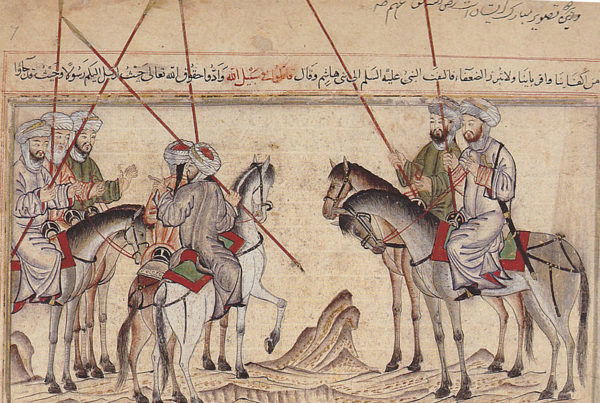 If you are looking for a book on special operations forces at war in Iraq or Afghanistan, this is not the one. What retired General Stanley McChrystal and his co-authors have done is draw on their respective substantial military and managerial experience to look at complex problems in a complex world and what it means for both the military and business. Chris Fussell and David Silverman are both former SEALS, while David Silverman is a post graduate student. Most of all, this book is about leadership and management. The writers provide the reader with an overview of management theory that begins with Taylor’s work on scientific management, which emphasized efficiency and established the long-standing basis of both military and business organizations throughout the 20th century. The authors provide an analysis of complexity, while being very careful to differentiate complexity from complication. Methodically, the authors examine the difference between team thinking and command thinking. The authors discuss the importance of adaptability and resilience thinking which addresses the challenges of complexity, i.e. the ability to confront unpredicted threats rather than building defences to create systems that can ‘roll with the punches.’
If you are looking for a book on special operations forces at war in Iraq or Afghanistan, this is not the one. What retired General Stanley McChrystal and his co-authors have done is draw on their respective substantial military and managerial experience to look at complex problems in a complex world and what it means for both the military and business. Chris Fussell and David Silverman are both former SEALS, while David Silverman is a post graduate student. Most of all, this book is about leadership and management. The writers provide the reader with an overview of management theory that begins with Taylor’s work on scientific management, which emphasized efficiency and established the long-standing basis of both military and business organizations throughout the 20th century. The authors provide an analysis of complexity, while being very careful to differentiate complexity from complication. Methodically, the authors examine the difference between team thinking and command thinking. The authors discuss the importance of adaptability and resilience thinking which addresses the challenges of complexity, i.e. the ability to confront unpredicted threats rather than building defences to create systems that can ‘roll with the punches.’
Team of Teams goes into some detail as to how modern technological innovations can provide large organizations with what McChrystal and his team coin as “shared consciousness.” This technology, combined with an open leadership, provides not only a better-informed team, but a high degree of transparency in decision-making, thereby empowering those in lower levels within the decision-making chain. This was in contrast to the “need to know” mentality of stovepipes that permeated the world of intelligence agencies and military operations. McChrystal experienced this throughout his career, particularly as commander of the Joint Special Operations Command (JSOC) assigned to conduct highly sensitive counter terrorist missions in Iraq and Afghanistan, amongst others. In this light, McChrystal’s successful efforts to normalize sharing among a gamut of governmental, military and political staff, with the aim of developing trust and normalizing sharing among organizations and people who previously thrived on secrets and maintaining control of them, was a major leadership/bureaucratic achievement in itself. The sharing enabled McChrystal’s personnel to connect dots to get into the enemy’s OODA loop, i.e. their Observation, Orientation, Decision, Action cycle. More importantly, what can be drawn from McChrystal’s anecdotes that are interspersed throughout the book is the importance of co-locating the spectrum of stakeholders, so as to ensure a ‘shared consciousness’ as to what is evolving and what must be done. Here, McChrystal rightly emphasizes that there is no alternative to full transparency and empowerment, noting that the operational advantages outweigh the risks. The key element is the trust McChrystal puts in those embraced within the Team of Teams. He argues that technology can be leveraged to embrace all stakeholders and their representatives into a unified and effective “team of teams.” The authors persuasively posit that leadership in the complex environment of the 21st century must realize that there is no “zero defects” approach to dealing with issues, i.e. perfection, but rather leaders must learn to be content with a 70% solution. Notwithstanding, McChrystal et al argue that the devolution of decision-making to the lowest practical level is critical for success. As the authors argue “It should be done if the recipients of newfound authority have the sense of perspective to act on it wisely.”
The authors understand that in today’s interconnected world, there are too many sources of data and the tsunami of information will overwhelm any leader who tries to incorporate all data within a short period of time to make an “informed decision.” They note that modern leaders cannot know everything and must therefore become experienced with being comfortable in dealing with ‘unknowns,’ so as to develop an ability to deal with the uncertainty and volatility of the 21st century.
The authors draw upon some interesting historical anecdotes when looking at famous leaders in history, such as Horatio Nelson. It is noted that Nelson’s victory at the Battle of Trafalgar in 1805 was due not only to extraordinary British seamanship and gunnery by those partaking, but the creation of confusion and uncertainty in the French Navy’s centralized authoritarian command chain. McChrystal and the authors employ Admiral Nelson and his subordinate commanders as a sound example of shared consciousness. It is said that Nelson told his commanders “No captain can do very wrong if he places his ship alongside that of the enemy.” That statement could have been dangerous in the minds of many who had not had their leadership cultivated, particularly that of making sound decisions. This shared consciousness would have failed had his subordinate commanders lacked any comprehension of what was expected of them throughout the battle. Nelson trusted and empowered his subordinate commanders during the Battle of Trafalgar as he had mentored them and trusted their individual qualities as leaders and as decision-makers. He knew that they had both contextual understanding of the mission as well as the authority to execute wisely. The authors note that after the battle, French vice-admiral Villeneuve said, “to any other Nation, the loss of a Nelson would have been irreparable, […] but in the British Fleet off Cadiz, every Captain was a Nelson.”
Those involved in the long war against terror in the information age know that speed is critical. Hierarchical organizations cannot keep up with sophisticated networked terrorist organizations intent on undertaking nefarious activities. The structure of these hierarchical organizations are not conducive to facilitating the expeditious flow of information, formulating options, making decisions and following them down the chain for execution. The ability to adapt, build trust and empower your network to act in good faith is vital. This will likely be the greatest paradigm shift for those who are or ascending to leadership positions in the 21st century.
This book is truly worthy of the time taken to read it, and should be incorporated in the reading list of military/civil senior leadership development schools and education programs.








